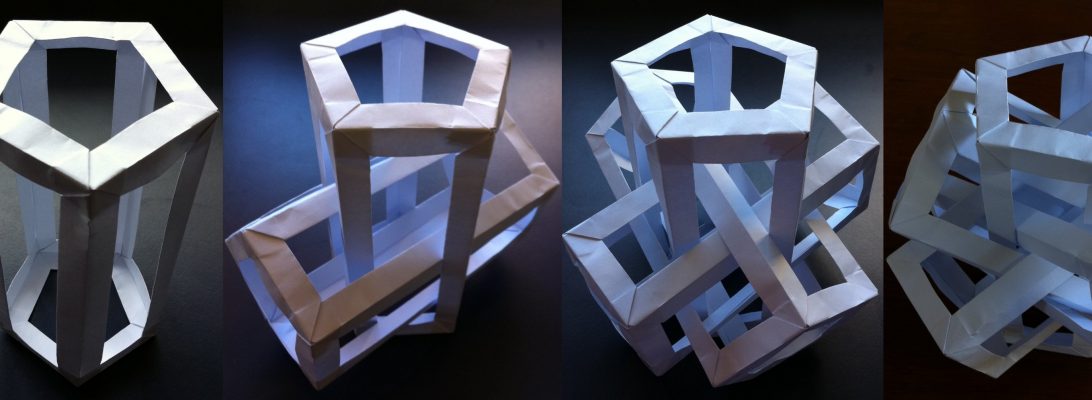When I first saw this set of diagrams I thought I wanted to try it (common sense did NOT cut in at any stage):
Originally diagrammed for a 1×30+ square, and originally designed to be a massive sculpture with a 2m+ wide hood on a wire-frame armature, finding paper to suit was a challenge. I settled on white wrapping paper (used for “Last Waltz”) and cut the longest length possible with a 15cm square as the governing width – I managed 18 squares long, roughly 4/7ths the required length, and accepted that I would just be missing some coils of the body. So, over a 7 day period, doing a little (well, actually quite a lot) each day, I began the task of revealing the snake that was trapped in the long rectangle of paper. Starting with the HEAD (seemed like as good a place as any), keeping the rest of the paper not mangled was an issue on my work desk, so migrated to the dining table.
So, over a 7 day period, doing a little (well, actually quite a lot) each day, I began the task of revealing the snake that was trapped in the long rectangle of paper. Starting with the HEAD (seemed like as good a place as any), keeping the rest of the paper not mangled was an issue on my work desk, so migrated to the dining table.
Having shaped lovely fangs, a prominent forked tongue and beady eyes, I then moved on to the first pleating marathon to form the HOOD – here scale was my enemy – the pleats necessary to stop the hood unraveling were accordion crimps with insane measurements like 2mm each – thank goodness for fingernails and my bone folder. I found I could only do these folds during daylight as overhead lighting on this paper made existing creases very difficult to see. At this stage the paper suffered paper fatigue and I strengthened the tiniest pleats with a little PVA glue – yes, I know this is cheating but I want the model to last, not fray and split.
After the hood was complete, the task of cross-pleating the BODY could begin – this was insane – the diagram said crease in diagonal 1/16ths – given that I had a 15cm width, I thought bugger it and creased in 15ths – so I could use a ruler as there were NO folding landmarks. Once the pre-creasing was complete, then alternate crimps (each 1/4cm) formed the scales – HUNDREDS of them.
The inherent beauty of the model was obvious – the diagonal pleating is architectural and although time consuming, the result is stunningly beautiful and very satisfying. Once scales were in place, right down to the tip of the tail, body SHAPING was next – carefully folding along the body to tuck rough edges under and round the body to make it snake-like. I put this off for a day or so because I was so pleased with the flat pleating and worried about breaking it to make it round. Additionally I added pleats on the inside surface to cause it to curve inwards, although it seemed to want to do that on its own accord.
All that was left was to devise a way of posing and displaying the model – I wanted it to have it’s head raised – that was the threat pose the model was designed to showcase – originally I fashioned a wire to make a sort of internal scaffold, but went to a craft shop looking for white plastic tubing to encase the ugly wire and found a “doll stand” in white enamel. $5 later and I have a permanent display for it.
This has taken me ages, and I doubt I will consider such a marathon project again. There was a LOT of repetition, which I suppose makes this model simpler, but at no time did I regret starting it and all the time I was folding I was excited to see what it would turn out like. I will probably keep this model, and with it’s nice stand it will probably find a way into our china cabinet (it currently sits atop it).
What have I learned from this model? Accuracy matters, patience is it’s own reward, small errors accumulate, near enough is NOT good enough and tea is a good folding accompaniment, beer is not.
If you have managed to continue reading down to here I thank you for staying awake. Polite applause is now appropriate.

























